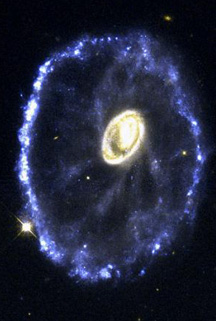|
INSTRUCTOR'S STATEMENT: |
This required ("core") course is designed to provide
a broad introduction to the current state of knowledge about the
structure and evolution of our own Galaxy and other galaxies.
In addition to such classical topics as stellar populations,
Galactic rotation, and morphological classification of galaxies,
I will emphasize recent developments in this rapidly changing
field. The first half of the course will concentrate on the Milky
Way; in the second half we will go on to discuss properties of
galaxies in general. A preliminary (and very ambitious) list
of topics is given below; some of these may have to be omitted
or only sketchily covered. Expect a relatively empirical approach
to much of the material; I am an observational astronomer!
(Little emphasis will be given to cosmology, which will be the
subject of an entire separate course, to be taught by Paul Shapiro
in the spring 1998 semester.) We will begin the course with a
lecture-style format, but later on in the semester there will
be more student participation, in the form of oral reports and/or
student-led discussions of journal articles.
|
|
TEXTBOOKS: |
The usual textbooks are Mihalas & Binney (1981), Galactic
Astronomy: Structure and Kinematics, 2nd edition, and Binney
& Tremaine (1987), Galactic Dynamics. We will use
neither of these as a primary text. Mihalas & Binney is out
of date and currently out of print. Binney & Tremaine is
an excellent reference for its subject but has too narrow a focus
for my purposes in this course. Instead, I have ordered the following
two books, which together provide reasonably thorough, up-to-date
coverage of the fields of Galactic (Milky Way) and (extra)galactic
astronomy respectively. These will be available for purchase
at the Austin bookstores in the fall.
-
The Milky Way as a Galaxy, 1990,
by Gerard Gilmore, Ivan King, and Pieter van der Kruit (University
Science Books). Lecture Notes for the Saas-Fee Advanced Course
No. 19.
-
Galaxies and Cosmology,
by F. Combes, P. Boisse, A. Mazure, and A. Blanchard (Springer-Verlag),
original French edition published in 1991, English translation
by M. Seymour 1995.
|

